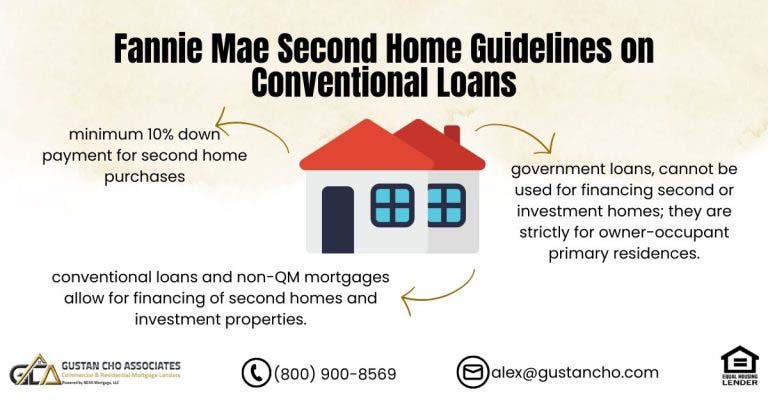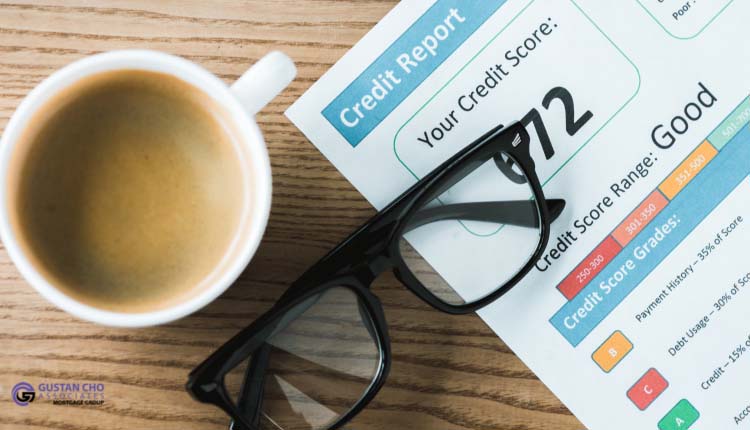In this article, we will discuss and cover conventional refinance mortgage pricing adjustments. Mortgage pricing adjustments, also referred to as loan level pricing adjustments (LLPAs) are pricing hits lenders charge due to higher risk levels. Mortgage rates are at historic lows. There is no doubt mortgage rates will go up again.
The new Biden Administration is on a spending spree that will spiral inflation out of control. The best measure to control out-of-control inflation is to increase interest rates.
No matter what Fed Chair Jerome Powell says about not raising rates, rates will go up if inflation is spiraling out of control. There are still many homeowners who have mortgage rates in the 5.0% range. Prime borrowers can refinance their mortgages in the low 3.0% range on a 30-year fixed-rate mortgage. 15-year fixed-rate mortgages are under 3.0%. In this article, we will discuss and cover pricing adjustments on conventional mortgage refinance transactions.
Refinancing Conventional Mortgage Loans at Today’s Low Rates
Conventional Refinance Mortgage Pricing Adjustments On Conforming Home Mortgages. It is no secret that mortgage rates are incredibly low during the COVID-19 coronavirus outbreak. This has created a refinance boom across the nation. Many Americans are refinancing using conventional mortgage products through Freddie Mac and Fannie Mae. In this blog, we will detail the recent change in refinance fees brought forth by these government-sponsored entities. We will also discuss how to complete a refinance transaction with Gustan Cho Associates. Click here for Refinancing conventional mortgage loans
Loan-Level Pricing Adjustments on Refinancing Conventional Mortgage Loans
Loan level pricing adjustments (LLPAs) are fees or discounts applied to conventional mortgage loans based on multiple factors associated with the borrower and the loan itself. Loan-level pricing adjustments are typically implemented by mortgage investors, such as Fannie Mae and Freddie Mac, who purchase loans from lenders. In rhe following paragraphs, we will cover how loan-level pricing adjustments work on conventional loans.
How Conventional Refinance Mortgage Pricing Adjustments on Credit Score Works
The borrower’s credit scores are the single largest loan-level pricing adjustment on rates. Borrowers with higher credit scores generally receive better loan terms. In comparison, those with lower scores may face additional fees. The exact adjustments vary by lender and investor, but generally, the lower the credit score, the higher the LLPA.
How Mortgage Loan Size Affects Conventional Refinance Mortgage Pricing Adjustments
Larger loan amounts or lower may result in higher interest rates or fees due to the increased risk for lenders. Loans for purchases, refinances, or cash-out refinances may have different LLPAs. The term of the mortgage loan has an impact on loan-level pricing adjustments on rates. The length of the loan term impacts LLPAs. Generally, longer loan terms may result in higher LLPAs.
How Layered Risk Factor in Loan-Level Pricing Adjustments
Due to the increased risk, loans with limited documentation, such as stated income or no income verification loans, may have higher LLPAs. LLPAs can be assessed as positive (discounts) or negative (fees). For example, a borrower with a high credit score and a low LTV ratio might receive a discount on their interest rate.
The borrower’s credit scores have an impact on mortgage rates. Mortgage borrowers with a lower credit score and a high LTV ratio might incur higher rates and additional fees.
It’s important for borrowers to understand how these adjustments can impact their overall loan costs and to work with lenders who can help navigate these complexities. Additionally, borrowers can improve their loan terms by improving their credit score, providing a larger down payment, and reducing their debt-to-income ratio.
What Are Conventional Refinance Mortgage Pricing Adjustments
Conventional refinance mortgage pricing adjustments refer to the additional costs or changes in interest rates applied to a mortgage loan when refinancing a conventional mortgage. Various factors influence these adjustments and can vary between lenders. Here are some common pricing adjustments. Mortgage rates are priced based on several factors. However, the biggest factor in pricing mortgage rates is credit scores on government loans. Conventional loans are credit scores and loan-to-value. Mortorrowers with lower credit scores may face higher rates or additional fees.
Loan-Level Pricing Adjustments on Conventional Loans
Conventional refinance mortgage pricing adjustments are additional costs or changes in interest rates applied to a borrower’s mortgage refinance based on various risk factors or characteristics associated with the loan. These adjustments are made by lenders to compensate for increased risk or to reflect market conditions. In the following paragraphs, we will cover some common factors that may result in pricing adjustments for a conventional refinance mortgage:
How Credit Scores Affect Conventional Refinance Mortgage Pricing Adjustments
Credit scores are the largest factor in determining rates on mortgage loans. Borrowers with lower credit scores have a loan-level pricing adjustment on the rate due to lenders considering their higher risk. Lower credit score borrowers face higher interest rates and additional fees. The higher the borrower’s credit scores, the lower the mortgage rates. Mortgage lenders offer better rates to borrowers with excellent credit scores as they are considered lower risk.
Click here for Refinancing conventional mortgage loans
How Loan-to-Value (LTV) Ratio Affect Conventional Refinance Mortgage Pricing Adjustments
The LTV ratio is the ratio of the loan amount to the appraised value of the property. A higher loan-to-value ratio will get the borrower pricing hit due to less skin in the game. Loan-to-value is the mortgage loan amount divided by the value of the home.
The loan-to-value ratio is the ratio of the loan amount to the appraised value of the property. Loans with higher LTV ratios typically have higher LLPAs because they represent a higher risk to the lender.
High loan-to-value means lower down payment for homebuyers and lower equity for homeowners. Therefore, higher debt-to-income ratios yield a higher risk for lenders. Borrowers with higher LTV ratios get loan-level pricing adjustments, higher interest rates, and additional fees.
How Property Type Affect Conventional Refinance Mortgage Pricing Adjustments
Property types have different type of risk factors. For example, a single family home will yield a lower rate than a condominium, townhouse, or two-to-four unit multifamily property. Property Occupancy factors in loan-level pricing adjustments on pricing mortgage rates. Owner-Occupant Primary home mortgage rates are lower than second home mortgage rates.
Investment properties have higher rates than primary homes and second homes.: Whether the property will be owner-occupied or used as an investment property can also affect LLPAs.
Different property types may carry different risk levels. For example, loans for investment or multi-unit properties may have higher LLPAs than loans for primary residences. Different properties (e.g., single-family homes, condos, multi-unit properties) may have varying risk levels, leading to pricing adjustments.
How Occupancy Type Affect Conventional Refinance Mortgage Pricing Adjustments
Owner-occupied properties typically receive more favorable rates than investment properties or second homes, which may face higher rates or fees. The term of the loan impacts mortgage rates. The longer the term of the mortgage loan, the higher the rates. Typically, shorter loan terms (e.g., 15 years) may have lower interest rates than longer terms (e.g., 30 years).
How Debt-to-Income (DTI) Ratios Affect Conventional Refinance Mortgage Pricing Adjustments
Borrowers with higher DTI ratios get priced with higher interest rates or additional fees as lenders may consider them higher risk. Debt-to-income (DTI) Ratio: The debt-to-income ratio is the ratio of a borrower’s monthly debt payments to their gross monthly income. Higher DTIs may lead to higher LLPAs.
Debt-to-income (DTI) Ratio also plays a factor in pricing the mortgage rates. There are two different types of debt-to-income ratios. Front-end and back-end back-end debt-to-income ratios.
The front-end debt-to-income ratio is calculated by dividing the housing payment (PITI) by the borrower’s monthly gross income. The back-end debt-to-income ratio is by adding the PITI and the sum of all monthly payments divided by the borrower’s monthly gross income. The debt-to-income ratio is the ratio of a borrower’s monthly debt payments to their gross monthly income. Higher DTIs may lead to higher LLPAs.
How Market Conditions Has an Impact on Loan-Level Pricing Adjustments
Lenders may adjust pricing based on prevailing market conditions, including changes in interest rates, economic factors, and other market trends. Loan-level pricing adjustments vary among lenders. It is highly recommended borrowers compare rates and terms from multiple lenders to find the most favorable terms for their refinance. Additionally, borrowers can reduce pricing adjustments by improving their credit score, increasing their equity in the property, or reducing their DTI ratio before applying for a refinance.
How Loan-to-Value Affect Pricing of Mortgage Rates
Loan-to-Value (LTV) Ratio: The LTV ratio is the ratio of the loan amount to the appraised value of the property. Lenders often charge higher rates or fees for loans with higher LTV ratios, as they perceive them as riskier investments. Loan Amount has an impact on the pricing of mortgage rates on conventional loans:
Larger loan amounts may incur higher interest rates or fees than smaller ones. This is because larger loans represent a greater risk to lenders.
The type of property being refinanced can also affect pricing adjustments. For example, condos or multi-unit properties may have different pricing adjustments than single-family homes. aggregate of all monthly debt payments of the borrower divided by the borrower’s monthly gross income. There are two types of loan:
Pricing Adjustments on Mortgage Rates Based on Occupancy Type
Whether the property is owner-occupied, a second home or an investment property can impact pricing adjustments. Owner-occupied properties typically receive more favorable terms compared to non-owner-occupied properties.The term of the loan (e.g., 15 years, 30 years) can also affect pricing adjustments. Generally, shorter-term loans may have lower interest rates but higher monthly payments. In contrast, longer-term loans may have higher interest rates but lower monthly payments.
Lock Period After Locking Mortgage Rates
The length of time for which the interest rate is locked in can influence pricing adjustments. Longer lock periods may come with higher rates or fees than shorter ones. Borrowers need to shop around and compare offers from different lenders to find the most favorable terms for their refinancing needs. Additionally, working to improve credit scores and reduce LTV ratios before refinancing can help borrowers qualify for better rates and terms.
Fannie Mae and Freddie Mac Conventional Refinance Mortgage Pricing Adjustments
The two government-sponsored entities, FANNIE MAE and FREDDIE MAC have made an announcement that they are adding “adverse market fees” on all refinance products starting September 1, 2020. While there is not one clear-cut answer for the additional fees, many speculate it is to prepare for substantial losses in the housing market moving forward. The global market is in turmoil during this pandemic. Fannie Mae and Freddie Mac went under government control during the last recession. And they have remained government-sponsored entities since. Although the Trump administration would like to privatize them again, that does not look like something that will happen soon. Click here for Fannie Mae and Freddie Mac Conventional mortgage loans
Changes In Conventional Refinance Mortgage Pricing Adjustments Takes Effect
This 0.5% increase in refinancing fees is to minimize losses based on future projections. It is estimated this will cost the average consumer about $1400 of additional fees. Also, many Americans who have not locked in their interest rates will be affected just days before closing. There are many Americans on the fence with refinancing their mortgage and this may push them to hold off on the transaction. Please keep in mind, this increase in fees only applies to refinance transactions and not for Americans trying to purchase a new property. This 0.5% increase in fees was approved by FHFA, the Federal Housing Finance Agency.
Refinancing Your Current Home Mortgage
How to refinance a property? Completing a refinance with Gustan Cho associates is very simple. Even during this pandemic, we are helping hundreds of Americans refinance their mortgages. This is a great opportunity to save some money across the board. Whether using this opportunity to take cash out of your property or simply lower your interest rate or the term of your mortgage, this is a great time to complete a refinance. Even with the loan level pricing adjustment set by Freddie Mac and Fannie Mae, rates are still historically low.
Steps in Starting The Refinance Mortgage Process
What are the steps to refinance your property? If you are in the market to refinance your mortgage loan, the first step is to call Mike Gracz on (800) 900-8569. You and one of our loan officers at Gustan Cho Associates will have a one on one mortgage consultation.
Borrowers will discuss their refinance mortgage goals and come up with a customized solution to save their hard earned money they are paying senselessly due to high mortgage rates.
During this phone call, you may discover that utilizing a cash-out mortgage transaction could help you lower your overall monthly obligations by combining consumer debt into your mortgage loan. After your refinance consultation, you will be emailed an application link from a licensed loan officer in your state. That link will give your loan officer permission to verify your credit report and start your refinance loan.
How To Avoid Stress During The Refinance Mortgage Process
What to expect during the refinance process? Once you agree on the refinance terms, a full disclosure package will be sent to you. Most of the documents will be signed electronically, and once these are returned, your loan team will get to work for you. To help streamline the mortgage process and avoid stress during the refinance mortgage process, our borrowers will be working with experienced mortgage professionals.
The single most common problem borrowers go through stress during the mortgage process and a last-loan denial is because the loan officer and his or her support staff did not properly qualify the borrower.
Each borrower will be assigned to a mortgage loan processor, loan officer assistant, and operations and support account executive. The processing staff will complete all required verifications and get your file ready for underwriting. During this time, an appraisal will be completed (unless you get an appraisal waiver). Once all verifications and appraisals are returned, your file will be conditionally approved by an underwriter. At this time they may require a few additional documents to get to the closing table.
Conventional Refinance Mortgage Pricing Adjustments Mortgage Process
Once you send those documents back, your file will be clear to close. At that point, a closer from the title company will be sent to your home (or any location) to sign all required mortgage documents. If you are refinancing your primary residence, a three-day RIGHT OF RECISSION period will start. Before funding, three business days must elapse before your loan officially funds. On the funding date, your current mortgage will be paid in full and of a cash-out transaction, your other creditors will also be paid. At that point, you now have a new mortgage loan recorded with your county. If this is an investment property or a second home, there is not a three-day waiting period before funding.
Qualifying For a Mortgage With a Lender With No Overlays
During these unprecedented times of the COVID-19 coronavirus outbreak, the refinance process may take longer than normal. The process is currently taking between 45 and 60 days because of the volume of mortgage applications. The good news is, you already live in the home, unlike a purchase transaction. Even if you have been turned down for a refinance by a different lender, we encourage you to call Gustan Cho Associates today. You may be running into a LENDER OVERLAY. We do not have overlays on our refinance mortgage products. We can be reached directly at (800) 900-8569 or via email at gcho@gustancho.com.
FAQ: Conventional Refinance Mortgage Pricing Adjustments
- 1. What are mortgage pricing adjustments, and why do lenders charge them? Mortgage pricing adjustments, also known as loan-level pricing adjustments (LLPAs), are additional costs or changes in interest rates applied to mortgage loans based on various risk factors associated with the borrower and the loan. Lenders charge these adjustments to compensate for higher risk levels and reflect market conditions.
- 2. How do LLPAs work on conventional mortgage refinance transactions? LLPAs are fees or discounts applied to conventional mortgage loans by mortgage investors such as Fannie Mae and Freddie Mac. These adjustments consider credit scores, loan size, property type, occupancy, debt-to-income ratios, and market conditions.
- 3. What role do credit scores play in conventional refinance mortgage pricing adjustments? Credit scores are a significant factor in determining loan-level pricing adjustments. Borrowers with higher credit scores typically receive better loan terms, while those with lower scores may face additional fees. The lower the credit score, the higher the LLPA.
- 4. How does the size of the mortgage loan affect pricing adjustments? Larger loan amounts may result in higher interest rates or fees due to increased risk for lenders. Different loan purposes, such as purchases, refinances, or cash-out refinances, may also have different LLPAs. Additionally, longer loan terms may lead to higher LLPAs.
- 5. How do layered risk factors impact loan-level pricing adjustments? Due to increased risk, loans with limited documentation, such as stated income or no income verification loans, may have higher LLPAs. The adjustments can be positive (discounts) or negative (fees) based on factors like credit score and loan-to-value ratio.
- 6. How do property type and occupancy affect conventional refinance mortgage pricing adjustments? Different property types and occupancy statuses carry varying risk levels, resulting in pricing adjustments. For instance, owner-occupied properties typically receive more favorable rates than investment properties. The type of property, such as single-family homes or condos, can also impact pricing.
- 7. What is the significance of the loan-to-value (LTV) ratio in pricing adjustments? The LTV ratio, representing the loan amount divided by the property’s appraised value, influences pricing adjustments. Higher LTV ratios may incur higher interest rates or fees, as they pose a higher risk to lenders.
- 8. How do market conditions affect loan-level pricing adjustments? Lenders may adjust pricing based on prevailing market conditions, including changes in interest rates and economic factors. These adjustments vary among lenders, making it crucial for borrowers to compare rates and terms to find the most favorable terms for their refinance.
- 9. What changes have Fannie Mae and Freddie Mac made in conventional refinance mortgage pricing adjustments? As of September 1, 2020, Fannie Mae and Freddie Mac introduced “adverse market fees” on all refinance products to minimize losses based on future projections. This 0.5% fee increase is estimated to cost the average consumer about $1400 in additional fees.
- 10. How can borrowers navigate the refinance process and avoid stress? Borrowers can start the refinance process by contacting Gustan Cho Associates for a personalized consultation. To secure favorable mortgage terms, focus on improving credit scores, reducing debt-to-income ratios, and working with experienced professionals.
Click here for qualify for a mortgage with a lender with no overlays










